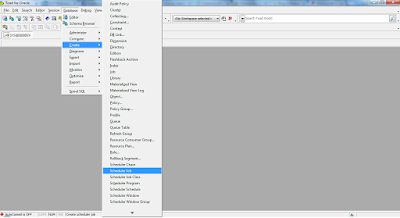Introduction to Free / Open Source Databases (Part - 3)
CloudStore (formerly known as Kosmos File System) is an open source high performance distributed file system, it is written in C + +,, CloudStore Ke Yi and Yi Ji Hypertable Hadoop integration are then allowed applications are built on those systems, And the bottom Shuojucunchu seamlessly use CloudStore. CloudStore support Linux and Solaris, is mainly used to store data on Web logs and Web crawling.
OpenQM is the only one with both commercial and free open source support multi-value database, released on GPL agreement, multi-value database NoSQL played a role in promoting the sport, it is also because of its speed, small size, cheaper than the relational database quickly recognized. Commercial version supports Windows, Linux (RedHat, Fedora, Debian, Ubuntu), FreeBSD, Mac OS X and Windows Mobile, its list price is less than the value of products more than other 1 / 5, commercial version also includes a GUI management interface and terminal simulator, open source version includes only the core of multi-value database engine, mainly for the developer prepared.
ScarletDME is an open source multi-value database, it is OpenQM community branch version, originally developed by the Ladybridge, this project was founded on November 28, 2008, both in the independent development of their capabilities, but also contribute to OpenQM code. This project was originally named Ladybridges GPL OpenQM, now officially changed to ScarletDME, where DME is the Data Management Environment (Data Management Environment) acronym.
SmallSQL is a 100% pure lightweight database written in Java, generally used in embedded field, compatible with SQL 99 standard, support for JDBC 3.0 API, located in the high-end Java Desktop SQL Database. Support all running Java platform, can be directly embedded into the application. But it also has some disadvantages, such as no network interface, you must install the Java run-time, at the same time can not be shared between multiple applications in the database, no user management.
LucidDB only a focus on data warehousing and business intelligence, open source RDBMS, it uses the column storage architecture to support bitmap index, hash Lian Jie / aggregation and multi-level version of the page, most of the database initially focus on management capacity are and analysis functions are later additions. On the contrary, LucidDB all the components from the outset to meet the needs of flexible, high-performance data integration and data query and design of large-scale, in addition, its architecture and complete departure from the user, simple and absolutely do not need DBA.
LucidDB the hardware requirements are also very low, if not set up a clustered environment, in a single Linux or Windows servers also can get excellent performance. Latest version also added to the Mac OS X and Windows 64-bit support, the official website of the documentation and tutorials are also very rich and very worthy of your experience.
HyperGraphDB is a universal, scalable, portable, distributed, embedded and open source data storage mechanism, it is a graphical database, designed for artificial intelligence and semantic Web project design, it can also be used in any size embedded object-oriented database. As its name, HyperGraphDB is used to store super-map, but it also is of a general family of graph database, as a graphic database, it does not impose any restrictions on it compared to other graphics more feature-rich database.
HyperGraphDB very stable, has been applied in many production environments, including a search engine and Seco scripting IDE. It supports * nix and Windows platforms, requires Java 5+.
InfoGrid is a graphical database of the Internet, it provides many additional components, making the image based on the development of RESTful Web application procedure will be easier. InfoGrid is open source, include a range of projects:-
- InfoGrid graphics database project - InfoGrid heart GraphDatabase, can be used independently, it can be attached to other InfoGrid project.
- InfoGrid graphics database grid project - based on the increase in GraphDatabase replication agreement, it is more than can be distributed GraphDatabase in a very large image management environment of collaboration.
- InfoGrid storage projects - such as SQL databases, and distributed hash table NoSQL as an abstraction for the storage technology to provide a common interface, so InfoGrid GraphDatabase can use any persistent data storage technology.
- InfoGrid user interface project - will GraphDatabase content to map the REST style, the browser can access the URL.
- InfoGrid lightweight identification project - implementation of user-centric identity technologies such as LID and OpenID.
- InfoGrid Warehouse Project - define a reusable object model library, as InfoGrid application mode.
- InfoGrid Probe project - to achieve Probe framework that allows developers to any data source on the Internet as an image object view.
- InfoGrid Utilities project - the use of common objects collected InfoGrid framework and practical code.
Apache Derby is the Apache DB subproject, it is entirely written using Java, is an open source relational database, its size is very small, basic engine with JDBC driver is only 2.6MB, it supports the SQL standard, it provides an embedded JDBC drive, it can be embedded into any Java-based applications, Derby also supports common client / server model, it is easy to install and use.
Hamsterdb is a lightweight embedded NoSQL Key / Value storage engine, it has been five years, and now it focuses on the development of ease of use, high performance, stability and scalability on. Hamsterdb Support Services (at the same time can handle only one transaction), to support memory database support based on HTTP server embedded remote database, to support logging / recovery, AES encryption, zlib based compression, support for C + +, Python,. NET and Java programming language.
H2 Database is an open source Java database, it is fast, including the JDBC API, support for embedded and server mode, memory database, provides a browser-based console program, its size is very small, only one jar file is about 1MB in size, it also supports ODBC driver and full-text search.













Comments
Post a Comment